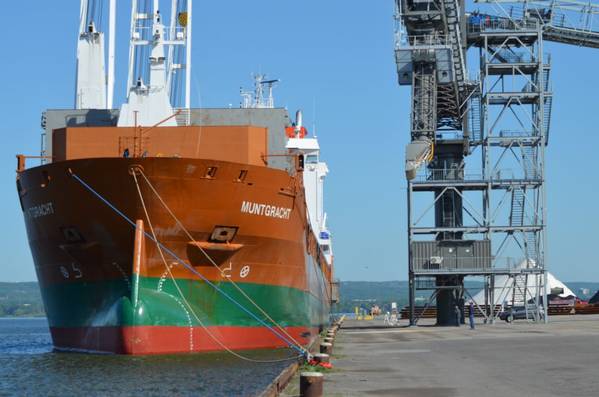The Port of Hamilton said it continues to expand its role as a transportation hub for Ontario’s agri-food sector.
In 2017, the port handled its highest-ever total of agricultural products. Close to 2.3 million metric tons (MT) of commodities such as Ontario-grown corn, wheat and soybeans, as well as canola, sugar, potash and other fertilizers were handled through the Port of Hamilton. Agricultural cargoes now make up 23 percent of the port’s total, up from 12.5 percent in 2010.
Hamilton Port Authority (HPA) President & CEO Ian Hamilton attributes the steady growth in the agricultural sector to the port’s ability to respond to market opportunities: “Global demand for food is growing, and Canada has an impeccable brand internationally for food safety and quality.” Capacity at the port has been growing steadily to keep up with this demand. “The Port of Hamilton has attracted more than $200 million in agri-food related private sector investment in recent years, which means our terminal operators have the ability to move more product, more efficiently,” said Ian Hamilton.
Success with primary agricultural commodities has led to the attraction of new supply chain partners to the Port of Hamilton. The port now has 14 tenants in the agri-food sector, from food processing, grain milling, and beer brewing, to food-grade trucking and warehousing. “We brought together all the right ingredients, and now we’re really cooking,” said Hamilton.
Overall, the port’s tonnage for all cargoes was six per cent higher than in 2016, at 9.86 million MT in 2017.
Commodities associated with steelmaking rebounded in 2017, spurred by a revival of activity at Stelco’s Hamilton works. Import shipments of finished steel were also their highest ever, at more than 620,000 MT, 20 per cent higher than in 2016, reflecting strong demand from Ontario’s manufacturing sector.
It was also a solid year for investment at the Port of Hamilton, with new private sector facilities coming into operation. Investments included G3 Canada Ltd’s $50 million grain export terminal and Parrish & Heimbecker’s new $45 million flour mill, the first new flour mill built in Ontario in 75 years. HPA reinvests its own earnings into port infrastructure, which in 2017 totaled more than $10 million in new rail capacity, utility upgrades and energy efficiency improvements.
The Port of Hamilton is the largest port in Ontario, handling a wide variety of cargo types, and overseeing more than 630 acres of transportation-intensive employment lands. HPA’s Ian Hamilton believes the Port of Hamilton is the region’s best model for growing maritime trade and the economy along with it.
“The role of maritime trade in southern Ontario is sometimes overlooked, but it is critically important to industries like agri-food and manufacturing,” said Hamilton. “The opportunity is there if we want it, to use our marine sector to grow our economy and reduce our environmental impact at the same time.”
2017 Highlights
- Steel-making: 6,174,038 MT
- Finished steel: 622,263 MT
- Agricultural: 2,292,872 MT
- Liquid bulk: 275,208 MT
- Aggregates: 304,377 MT
- Other: 200,901 MT
- Total cargo: 9,869,660 MT
- Vessels: 603 (152 overseas; 451 domestic/U.S.)




